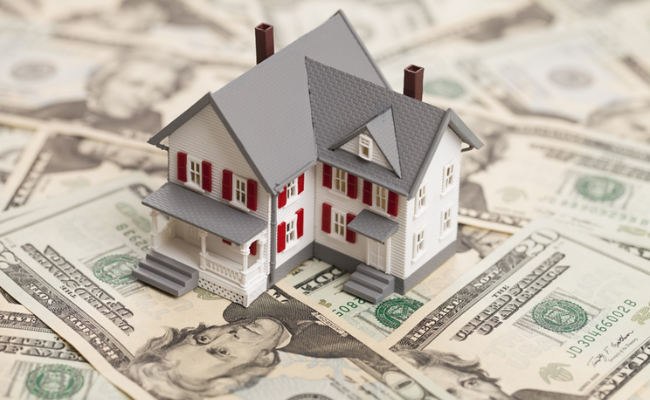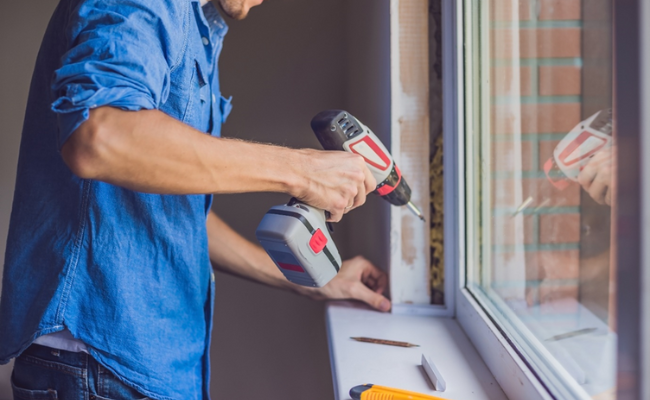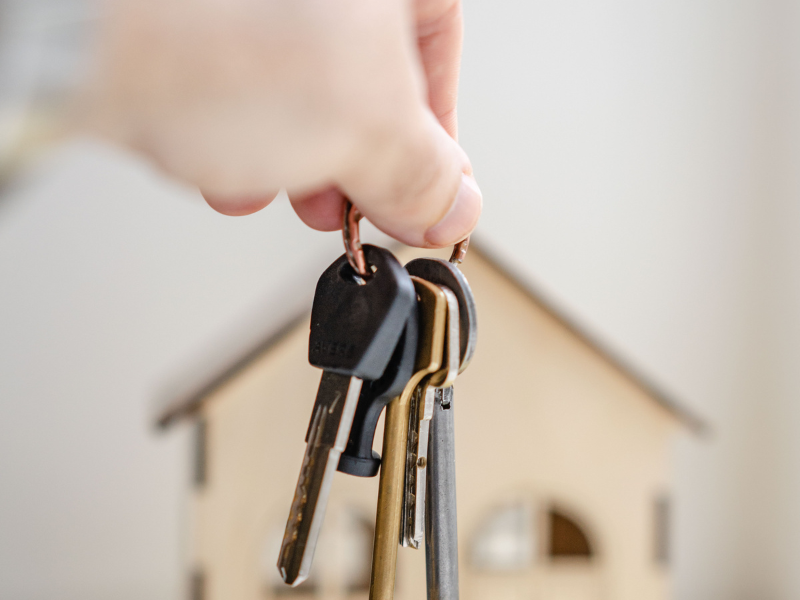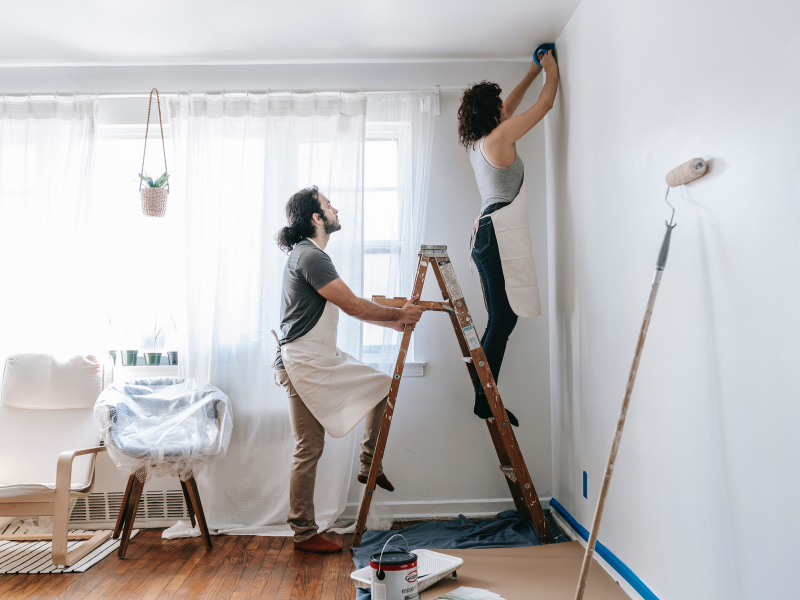Home Repair Loans: How To Get Money to Fix Your House?
There is no need to delay fixing or remodeling your home. Neglecting repairs can often worsen the problem over time, costing more long-term. To solve this, a home repair loan can help you refurbish and freshen up any part of your house.
In this ultimate guide, we delve into the world of home repair loans. We equip homeowners with the essential knowledge to navigate the financing landscape. Whether you’re skeptical about the options or seeking the most competitive interest rates, we’ve got you covered.
What Are the Most Common Home Repairs, and How Much Do They Cost?

The most common home repairs include roof repairs, furnace replacement, and window replacement. This costs range from a few hundred dollars to a thousand. Delaying the immediate fixing of a problem sometimes worsens the situation.
In some cases, this makes the cost of a repair more expensive.
Roof Repairs
The cost to repair a roof can vary depending on the type of roof, the size, and the severity of the damage. For example, a minor repair on a shingle roof may only cost a few hundred dollars. Meanwhile, a complete replacement of a tile roof can cost upwards of $10,000.
Dividing roof repairs into two categories is common: emergency repairs and scheduled repairs. Emergency repairs are usually necessary when there is severe damage to the roof, such as after a storm. Scheduled repairs are typically smaller in scope and can be planned for in advance.
The type of roof also affects the cost of repairs. Shingle roofs are the most common type of residential roof in the United States. With this, they are also one of the most affordable to repair. Tile roofs are less common but also more expensive to repair. Metal roofs are relatively rare but often the most costly to repair.
The size of the roof also affects the cost of repairs. A small roof will require less material and labor than a large roof. The severity of the damage also plays a role in determining the cost of repairs. For example, a small leak may require patching and sealant. While, a large hole may require replacing multiple boards or shingles.
Replacing a Furnace
Another common—and costly—repair is replacing a furnace. If your furnace is over 15 years old, it’s probably time to upgrade. Replacing an old furnace can cost anywhere from $3,000 to $5,000.
Replacing Windows
Another repair that varies widely in cost is the replacement of windows. The number and size of the windows being returned will determine the price. Expect to pay anywhere from $300 to $1,500 per window.
Replacing a Water Heater
If your water heater is over ten years old, it’s time to start thinking about replacing it. A new water heater will cost you between $1,000 and $2,500.
Clogged Drains
Lastly, fixing clogged drains is a repair that every homeowner must deal with at some point. The severity of the clog and the number of drains that need to be unclogged determine the cost. Repairs are anywhere from $100 to $200 per drain.
As you can see, even basic repairs can be expensive. So how do you pay for them?
Using Loans to Pay for Home Repairs
Most homeowners, especially those without an allocated budget or savings for home repairs, rely on loans. They can use loans to cover repairs, renovations, or upgrades.
These are the common types of loans:
Personal Loans
Personal loans tend to have lower interest rates than credit cards, making them a good option if you borrow money for home repairs. In addition, personal loans also have fixed interest rates. This means your monthly payments will stay the same for the life of the loan.
You can typically borrow anywhere from $1,000 to $100,000 with a personal loan, and you’ll have anywhere from 12 to 84 months to pay it back. However, one downside of personal loans is that they typically require a good to excellent credit score to qualify. So, if your credit score is on the lower end, you may not be able to get a personal loan.
If you are someone with less than perfect credit, lenders such as SimpleFastLoans offer personal loans to customers with good or bad credit. They provide same-day approvals that allow you to get the cash you need to make those urgent home repairs.
Home Equity Loan
With a home equity loan, borrowers can tap into the equity they’ve built in their property, while unsecured personal loans provide flexibility without collateral.
These loans offer competitive interest rates, and borrowers can choose fixed monthly payments. However, interest rates may vary depending on creditworthiness, and individuals with fair or poor credit may face higher rates.
With a home equity loan, you’re borrowing against the equity you have in your home. Equity is the part of your home that you own. It is the appraised value of your home minus any outstanding mortgage or other liens you have against it.
Home equity loans usually have terms of 5 to 30 years, and you can typically borrow up to 85% of your home’s value minus any outstanding mortgages or liens. The interest on a home equity loan is also tax-deductible if you itemize your deductions.
Compared to HELOCs, it has a fixed interest rate reflected in your monthly payment over the life of your loan.
Home equity loans are best suited for medium to large projects. You will need to know exactly how much you need before borrowing, but you can borrow more and have more time to repay the debt.
You May Also Like: Your All-In-One Guide to Navigating Mortgage Loans
Second Mortgage
Does the term “second mortgage” confuse you? Do you wonder if it differs from a home equity loan?
Homeowners often use the term “second mortgage” when they haven’t fully paid off their first mortgage, which was typically the loan used to purchase the property.
Homeowners can use additional home equity loans, or second mortgages, to borrow against the home if it has accrued enough equity. Payments are made monthly on top of payments to the first mortgage, hence the term “second mortgage.”
You can calculate equity by determining the difference between the value of your home and the amount you owe on any mortgage.
For example, imagine that your house is valued at $400,000. You may have made a down payment of $80,000.
You have also paid down $20,000 in mortgage principal. Because you still owe $300,000 on your home, you would have $100,000 in equity.
The lender will determine the loan amount, credit limit, and interest rate by looking at your home’s equity, credit score, and income.
Second mortgages, home equity loans, and some HELOCs require closing costs ranging between 3% and 6% of the total loan amount.
You can get loan estimates from several sources, including a local loan originator, an online or national broker, a bank, or a credit union. Make sure to carefully read all conditions before signing your loan.
Home equity line of credit (HELOC)
Another option is an equity line of credit (HELOC), which allows homeowners to borrow money as needed. HELOC is a secured loan that qualifies you for lower interest rates than an unsecured personal loan.
Being a revolving credit, a HELOC allows you to withdraw funds up to your approved borrowing limit as needed. This flexibility makes HELOCs an ideal financing option for larger, long-term projects, providing homeowners with affordable and adaptable funding for their home improvement endeavors.
Secured vs. Unsecured Loan
Secured loans for home improvements offer borrowers lower interest rates than unsecured options. Lenders determine the interest rate on such loans based on factors such as credit scores and minimum credit score requirements.
Before applying for a home improvement loan, compare the best lenders for low-interest rates, competitive fees, friendly repayment terms, and quick payouts.
You May Also Like: Applying for a Home Loan: 5 Things You Need to Know
Other Options for Home Repair That Are Not a Loan
If acquiring a loan is not a good option for your home repair, consider looking at these alternatives.
Savings
Saving money is the safest option for financing home renovations, although it may require waiting longer to start the project. By keeping it, you can avoid repaying loans or hefty credit card bills after completing the renovation.
The amount to save depends on the project’s scale and type, and starting with smaller, less expensive projects can help prevent overspending.
Credit Card
One of the biggest benefits of using a credit card to pay for home repairs is that many cards offer 0% APR financing for 12 months or more.
You can pay for repairs without paying interest if you pay off the balance during the promotional period. Remember that if you don’t pay off your balance within the promotional period, you will be charged interest retroactively from the date of purchase.
Another benefit of using a credit card is that it can help you build or improve your credit score. This is because using a credit card responsibly—which includes making on-time payments and keeping your debt-to-credit ratio low—can help improve your credit score over time. And having a good credit score can save you money in the long run by qualifying you for lower interest rates on loans and other lines of credit.
When considering using a credit card for your home improvement projects, it’s worth considering store-issued credit cards offered by retailers like IKEA or Lowe’s.
Drawbacks of Using a Credit Card to Pay for Home Repairs
Of course, there are also some drawbacks to using a credit card to finance home repairs. One of the biggest dangers of using a credit card is that it can easily overspend. So when you use cash or write a check for repairs, you’re limited by the amount available.
But spending more than you intended is easy when you use a credit card, especially if you’re making expensive repairs. So, it’s essential to be mindful of your spending when using a credit card and stay within your budget.
Another drawback of using a credit card is that you could pay more interest than the repair cost if you’re not careful. This is why it’s vital to understand your card’s terms and conditions before using it to finance home repairs.
Once again, if you don’t pay off your balance within the promotional period, you’ll be charged interest retroactively from the date of purchase, which can add up quickly.
You May Also Like: How to Pay Off Debt: 10 Ways to Kill Debt with a Low Income
Lines of Credit
Lines of credit are similar to credit cards, but they usually have lower interest rates. A line of credit is an open-ended loan that allows you to withdraw money up to your limit whenever needed. The interest rate on a line of credit depends on several factors, including the prime rate and your credit history.
Lines of credit typically have terms of ten years, but some lenders may allow you to renew your line of credit once it expires. One advantage of lines of credit is that you only pay interest on the portion of the line that you use.
Cash-out Refinances
A cash-out refinance is a mortgage refinancing option where your existing loan is replaced with a larger one, providing a new interest rate. The surplus money obtained from this transaction can be utilized for home improvements, repairs, or renovations.
This approach suits homeowners who can only afford an additional monthly loan payment with refinancing and qualify for a better interest rate. However, associated costs and extended loan terms make it more suitable for smaller projects and emergency repairs.
Consider the drawbacks, such as appraisal expenses, origination fees, and longer repayment periods, and ensure the new interest rate is lower than your current one.
Government Loan Programs
Government loan programs provide homeowners with opportunities to fund essential home repairs. These programs are administered by various federal organizations such as HUD, the FHA, the VA, and the USDA.
Local loan programs offered by county or city governments may also be available. Considering these options lets you identify the most suitable financing solution for home repairs.
When considering government-issued loans for home improvement projects, weighing the benefits and drawbacks is important. One notable use is that these loans ensure you work with legitimate lenders, providing security and credibility.
Additionally, some government loan programs, such as the Title I loan, allow long-term tenants to apply, meaning you can be someone other than the homeowner to qualify.
However, it’s essential to be aware of the drawbacks. These loans typically have specific guidelines regarding using funds, limiting them to projects that enhance the property’s “livability” rather than luxury items. Furthermore, each government-issued loan program has its eligibility requirements, such as maintaining a debt-to-income ratio of 45% or less for the Title I loan.
Financing for emergency home repairs
When faced with the need for emergency repairs to your home and the immediate financial burden that comes with it, there are various options to consider.
In addition to the alternatives, homeowners can explore the possibility of filing a homeowners insurance claim to help cover the costs. The specific price will vary depending on the nature of the repair and the availability and cost of materials and labor.
You May Also Like: What Are the Pros and Cons of a Home Equity Loan?
Financing for emergencies with bad credit
If you are in a home repair emergency and facing credit challenges, you may be concerned about accessing the necessary funds. Fortunately, certain lenders offer loans specifically tailored for individuals with less-than-perfect credit.
Additionally, you can secure a loan with lower interest rates and fixed payments, even if your credit could be better. It’s important to compare different lenders and their offerings before making a final decision, especially when seeking debt consolidation loans for borrowers with bad credit.
Conclusion
When exploring home repair financing options, it’s essential to consider factors such as origination fees and homeowners insurance. These options provide a convenient way of borrowing money to finance necessary repairs or improvements.
FAQs
How do home repair loans work?
Home repair loans work by providing homeowners with a lump sum or a line of credit specifically earmarked for home repairs. The loan amount is determined based on factors such as the property’s value, the estimated repair cost, and the borrower’s creditworthiness. Borrowers can then use the funds to hire contractors, purchase materials, or cover other related expenses. Repayment terms vary depending on the loan type, with options ranging from monthly installments to revolving credit lines.
How can I qualify for a home repair loan?
Qualification requirements for home repair loans vary depending on the lender and loan type. Generally, lenders consider factors such as credit score, income, employment history, and property value. To increase your chances of qualifying, it’s essential to maintain a good credit score, provide accurate financial information, and demonstrate the ability to repay the loan. Some loan programs may also have specific requirements or incentives for certain groups, such as veterans or low-income homeowners.
How long does getting approved for a home repair loan typically take?
The time to get approved for a home repair loan can vary depending on the lender and the application process. Some lenders offer quick pre-approval decisions within a few business days, while others may require more extensive documentation and review, which can take a few weeks. Gathering all necessary documents and information beforehand is advisable to expedite the approval process.







